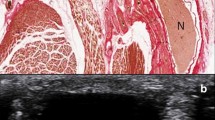Abstract
Arteriovenous heat transfer (AVHT) is a thermoregulatory phenomenon which enhances tolerance to thermal stress in a variety of animals. Several authors have speculated that human responses to thermal stress reflect AVHT in the head and neck, even though primates lack the specialized vascular arrangements which characterize AVHT in other animals. We modeled heat transfer based on the anatonmical relationships and blood flows for the carotid artery and associated venous channels in the human neck and cavernous sinus. Heat transfer rate was predicted using the “effectiveness-number of transfer units” method for heat exchanger analysis. Modeling showed that AVHT is critically dependent upon (1) heat exchanger effectiveness and (2) arteriovenous inlet temperature difference. Predicted heat exchanger effectiveness is less than 5.5% for the neck and 0.3% for the cavernous sinus. These very low values reflect both the small arteriovenous interface for heat exchange and the high flow rate in the carotid artery. In addition, humans lack the strong venous temperature depression required to drive heat exchange; both the cavernous sinus and the internal jugular vein carry a large proportion of venous blood warmed by its passage through the brain as well as a small contribution from the face and scalp, whose temperature varies with environmental conditions. Under the most optimistic set of assumptions, carotid artery temperature would be lowered by less than 0.1° C during its passage from the aorta to the base of the brain. Physiologically significant cooling of the blood supply to the brain cannot occur in the absence of a suitably scaled site specialized for heat exchange.
Similar content being viewed by others
References
Anderson JE (1978) Grant's atlas, of anatomy, 7th edn. Williams and Wilkins, Baltimore
Baker MA (1982) Brain cooling in endotherms in heat and exercise. Annu Rev Physiol 44:85–96
Brengelmann GL (1993) Specialized brain cooling in humans? FASEB J 7:1148–1153
Brown GA, Williams GM (1982) Effect of head cooling on deep body temperature and thermal comfort in man. Aviat Space Environ Med 53:583–586
Buguet A, Livingstone SD, Reed LD, Limmer RE (1976) Cold-induced shivering in men with thermoneutral skin temperatures. J Appl Physiol 41:142–145
Cabanae M (1993) Selective brain cooling in humans: fancy or fact? FASEB J 7:1143–1147
Crawshaw LJ, Nadel ER, Stolwijk J, Stamford BA (1975) Effect of local cooling on sweating rate and cold sensation. Pflügers Arch 354:19–27
Dittmer D (ed) (1961) Blood and other body fluids. Federation of American Societies for Experimental Biology, Bethesda, p 12
Edwards M, Burton AC (1960) Temperature distribution over the human head, especially in the cold. J Appl Physiol 15:209–212
Hardesty WH, Roberts B, Tole JF, Royster HP (1961) Studies on carotid artery flow. Surgery 49:251–256
Hayward JN, Baker MA (1969) Comparative study of the role of the cerebral arterial blood in the regulation of brain temperature in five mammals. Brain Res 16:417–440
Incropera FP, DeWitt DP (1990) Introduction to heat transfer, 2nd edn. Wiley, New York, pp 455, 617–618
Kety S (1960) Cerebral circulation. In: Magoun H (ed) Neurophysiology. Handbook of physiology, vol III, sect 1. American Physiological Society, Washington, D.C., pp 1751–1760
Kristiansen K, Krog J (1962) Electromagnetic studies on the blood flow through the carotid system in man. Neurology (Minn) 12:20–22
Lemons DE, Chien S, Crawshaw LL Weinbaum S, Jiji LM (1987) Significance of vessel size and type in vascular heat exchange. Am J Physiol 253:R128–135
McCaffrey TV, Geis GS, Chung JM, Wurster RD (1975) Effect of isolated head heating and cooling on sweating in man. Aviat Space Environ Med 46:1353–1357
Mitchell D, Laburn HP, Nijland MJM, Zurovsky Y, Mitchell G (1987) Selective brain cooling and survival. S Afr J Med Sci 83:598–604
Mitchell JW, Myers GL (1968) Analytical model of the countercurrent heat exchange phenomena. Biophys J 8:897–911
Morgans LF, Nunneley SA, Stribley RF (1981) Influence of ambient and core temperatures on auditory canal temperature. Aviat Space Environ Med 52:291–293
Netter FH (1989) Atlas of human anatomy. Ciba-Geigy, Summit, N.J., Plates 30, 64 and 130
Nielsen B (1988) Natural cooling of the brain during outdoor bicycling? Pflügers Arch 411:456–461
Nunneley SA, Myhre LG (1976) Physiological effects of solar heat load in a fighter cockpit. Aviat Space Environ Med 47:969–973
Nunneley SA, Troutman SJ, Webb P (1971) Head cooling in work and heat stress. Aerosp Med 42:64–68
Nunneley SA, Reader DC, Maldonado RJ (1982) Head-temperature effects on physiology, comfort and performance. Aviat Space Environ Med 53:623–628
Patten BM (1953) Cardiovascular system. In: Schaeffer MP (ed) Morris' human anatomy. Blakiston, New York, pp 612–826
Rasch W, Cabanac M (1993) Selective brain cooling is affected by wearing headgear during exercise. J Appl Physiol 74:1229–1233
Roessle R, Roulet F (1932) Mass und Zahl in der Pathologie. In: Aschoff L, Elias H, Eppinger H, Sternberg C, Wenckenbach KF (eds) Pathologic and Klinik in Einzeldarstellungen, vol 5. Springer, Berlin Heidelberg New York, pp 1–140
Rubenstein E, Mead TW, Eldridge F (1960) Common carotid blood temperature. J Appl Physiol 15:603–604
Schaeffer JP (ed) (1953) Morris' human anatomy. Blakiston, New York, p 640
Werner J, Buse M (1988) Temperature profiles with respect to inhomogeneity and geometry of the human body. J Appl Physiol 65:1110–1118
Author information
Authors and Affiliations
Rights and permissions
About this article
Cite this article
Nunneley, S.A., Nelson, D.A. Limitations on arteriovenous cooling of the blood supply to the human brain. Eur J Appl Physiol 69, 474–479 (1994). https://doi.org/10.1007/BF00239862
Accepted:
Issue Date:
DOI: https://doi.org/10.1007/BF00239862




